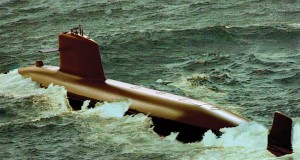Monitoring Mechanism
Implementation of offsets is always a long drawn process. It is an accepted fact that unmonitored offsets invariably result in wasteful activity. At times, a vendor may allocate offset programmes to a number of sub-contractors. The entry of sub-contractors complicates matters as their involvement is limited to the assignments in hand. Sub-contractors remain oblivious of the fact that their indifference can affect the main contract adversely.
A properly constituted monitoring mec-hanism has to be put in place to carry out regular monitoring of the programme and apply timely corrections, where necessary. It is a highly demanding and painstaking task for two reasons. First, offsets are generally formulated in broad terms and do not lend themselves easily to numerical quantification. Methods of fulfillment of offset obligations are often left unspecified in the original agreement and are instead negotiated over the life of the contract. Secondly, lack of effective oversight mechanism and the vendors’ reluctance to share data (terming it as commercially sensitive) render the whole programme open to manipulations.Additionally, on completion, a thorough review of the whole offset programme is required to be carried out to ascertain the degree to which the stated objectives had been achieved. Weaknesses and infirmities need identification for providing corrective inputs for policy modifications.
India has failed to realise the importance of effective monitoring of offsets. The task has been assigned to the Acquisition Manager in the Acquisition Wing. Vendors are required to submit quarterly reports to him. He may obtain assistance of the Defence Offset Facilitation Agency (DOFA) and may order audit by a nominated official or agency to confirm the actual status of implementation. It is a highly inadequate and unsatisfactory arrangement. Neither the Acquisition Manager nor DOFA has the necessary expertise and wherewithal for effective monitoring.
Recommended Frame Work
India must establish a broad based National Offset Mission under the Union Commerce Ministry. In addition to functionaries from various official agencies, it should also have representatives of the Indian industry – both public and private sectors. It should perform the role of an overarching body at the national level and formulate a pragmatic national policy on offsets with clearly spelt out aims and objectives – both short term and long term.
The primary objective of Indias offset policy should be to strengthen its indigenous defence industry through infusion of technology.
The policy should prioritise areas and fields in which offsets should be sought and issue directions for apportioning weightage to direct and indirect offsets. It should fix offset thresholds for different types of procurements and issue guidelines to all Ministries for fixing offset percentages. It should also lay down a broad framework for monitoring arrangement and issue guidelines for feedback and evaluation. A national data bank should also be created.
All offset packages linked to import deals of 1000 crore rupees and more should be referred to the National Offset Mission for the grant of ‘in principle approval’. Import proposals of lesser value should be managed by respective Ministries as per the laid down policy.
In the MoD, DOFA should be the designated authority to handle all aspects of offsets. The Acquisition Wing should be left free to concentrate on its primary task of managing defence procurements. DOFA should report to the Defence Acquisition Council (DAC) through the Department of Defence Production (DDP). DAC should formulate defence-offset policy, which should flow from the national policy and identify areas for offsets with inter se priority. It should also fix offset thresholds, keeping in mind the value of the deal, level of technology and the exporting country involved. An effective implementation, monitoring and feedback mechanism should be put in place.
Conclusion
According to some estimates, India proposes to spend up to USD 100 billion on capital procurements during the next five years. As close to 70 percent of military hardware is imported, the import bill will be USD 70 billion. At the base level of 30 percent, Indian offset benefits will amount to a staggering USD 21 million. To derive full benefit, it is absolutely necessary to understand the potential and dynamics of offsets. Offsets should not be viewed in isolation as one-time agreements, but as an important and integral element of long-term national policy.
Also read: Combating ‘Red Terror’
All successful offset programmes have certain common well-defined characteristics. First, deliberate and purposeful selection is made to fulfil a pressing technological/economic need. Second, hard negotiations are carried out by experts to extract maximum benefits from offset packages. Third, detailed planning is done to facilitate smooth and co-ordinated implementation. Fourth, close supervision and continuous monitoring are carried out to apply mid-course corrections and to ensure timely completion. And finally, a mechanism for regular feed back is put in place to help modify policies and fine tune procedures.
The primary objective of India’s offset policy should be to strengthen its indigenous defence industry through infusion of technology. An effective mechanism with required infrastructure has to be developed for effective and beneficial absorption of offsets. Finally, India must ensure that the benefits accruing from offsets do not get outweighed by the cost penalty.





